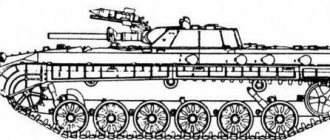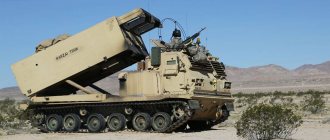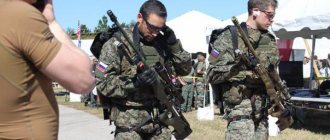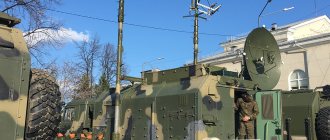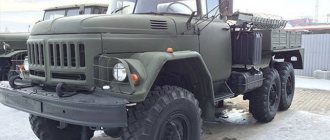Modern wars are distinguished by their swiftness and transience. Often the winners in military clashes are those who were the first to detect potential threats and react to them accordingly. For eight decades now, radar methods have been used for reconnaissance and recognition of the enemy at sea and on land, as well as in the air.
They are based on the emission of radio waves with the recording of their reflections from a wide variety of objects. Installations that send and receive such signals are modern radar stations or radars. The concept of “radar” comes from the English abbreviation – RADAR. It appeared in 1941 and has long been included in the languages of the world.
The advent of radar was a landmark event. In the modern world, it is practically impossible to do without radar stations. Aviation, navigation, hydrometeorological center, traffic police, etc. cannot do without them. Moreover, the radar complex is widely used in space technologies and in navigation systems.
Radar in military service
Still, the military liked radars most of all. Moreover, these technologies were originally created for military use and were practically implemented before the Second World War. All major states actively used radar to detect enemy ships and aircraft. Moreover, their use decided the outcome of many battles.
Today, new radar stations are used in a very wide range of military tasks. This includes tracking intercontinental ballistic missiles and artillery reconnaissance. All planes, helicopters, and warships have their own radar. Radars are generally the basis of air defense systems.
With guarantee
All radars recently adopted by our Aerospace Forces are distinguished by noise immunity and maximum automation of all processes. Modern radars of the air defense and missile defense forces of the Russian Aerospace Forces are capable of monitoring airspace as effectively as possible, tracking the movement of foreign aircraft and enemy missile launches.
The latest radars and air defense anti-aircraft missile systems completely control the air situation throughout our country. The forces and means of the Russian air defense system duplicate each other many times.
No one and nothing will sneak into our sky unnoticed and with impunity. They will notice and shoot you down.
How do radars work?
Location is the definition of where something is. Thus, radar is the detection of objects or objects in space using radio waves that are emitted and received by a radar or radar. The principle of operation of primary or passive radars is based on the transmission into space of radio waves reflected from objects and returned to them in the form of reflected signals. After their analysis, radars detect objects at certain points in space, their main characteristics in the form of speed, height and size. All radars are complex radio engineering devices made up of many elements.
Classification
Mobile radar "Protivnik-GE"
According to the scope of application there are:
- military radars;
- civil radars.
By purpose:
- detection radar;
- Control and tracking radar;
- panoramic radars;
- Side-view radar;
- Terrain-following radar
- weather radars;
- Target designation radar;
- Counter-battery radar;
- navigation radar, navigation radar:
- Situation surveillance radar.
By the nature of the carrier:
- coastal radars;
- maritime radars;
- airborne radars;
- mobile radars.
According to the nature of the received signal:
- primary, or passive response radars;
- secondary, or active response radar;
- combined.
By method of action:
- over-horizon radar;
- over-the-horizon radar.
By wave range:
- meter;
- decimeter;
- centimeter;
- millimeter.
Modern radar complex
Any radar consists of three main elements:
- Signal transmitters;
- Antenna;
- Receivers.
Of all radar stations, there is a special division into two large groups:
- Pulse;
- Continuous action.
Pulse radar transmitters emit electromagnetic waves for short periods of time (fractions of seconds). The next signals are sent only when the first pulses return and hit the receivers. Pulse repetition rates are also important characteristics. So low-frequency radars send more than one hundred pulses within a minute.
Pulse radar antennas work as receivers and transmitters. As soon as the signals are gone, the transmitters turn off for a while and the receivers turn on. Following their reception, reverse processes occur.
Pulse radars have their disadvantages and advantages. They can determine the range of several targets simultaneously. Such radars may have one antenna each, and their indicators are very simple.
However, the emitted signals must have high power. All modern tracking radars have a pulse circuit. Pulse radar stations usually use magnetrons or traveling wave tubes as signal sources.
Classification
There are two types of radar:
- Passive radar is based on receiving the object's own radiation;
- With active radar, the radar emits its own sounding signal and receives it reflected from the target. Depending on the parameters of the received signal, the characteristics of the target are determined.
There are two types of active radar:
Active radar with passive response
- With active response - the facility assumes the presence of a radio transmitter (transponder) that emits radio waves in response to a received signal. Active response is used to identify objects (friend or foe), remote control, as well as to obtain additional information from them (for example, amount of fuel, type of object, etc.);
- With a passive response - the request signal is reflected from the object and is perceived at the receiving point as a response.
To view the surrounding space, the radar uses various viewing methods by moving the directional beam of the radar antenna:
- circular;
- sector;
- helix view;
- conical;
- in a spiral;
- "V" review;
- linear (AWACS aircraft such as An-71 and A-50 (Russia) or American ones with the Avax system).
According to the type of radiation, radars are divided into:
- Continuous wave radar;
- Pulse radars.
Pulse radar systems
Radar antennas focus and direct electromagnetic signals, and also pick up reflected pulses and transmit them to receivers. In some radars, signals can be received and transmitted using different antennas located at large distances from one another. Radar antennas can emit electromagnetic waves in a circle or operate in certain sectors.
Radar beams can be directed spirally or have the shape of cones. If necessary, radars can track moving targets and point antennas at them all the time using special systems. Receivers process the received data and transmit it to the operators’ screens.
One of the main disadvantages in the operation of pulse radars is interference coming from real objects, from the earth's surface, mountains, and hills. Thus, on-board pulse radars during their operation in aircraft will receive shadows from signals reflected by the earth's surface. Ground-based or shipborne radar systems detect these problems by detecting targets that fly at low altitudes. To eliminate such interference, the Doppler effect is used.
Notes
- . TheFreeDictionary.com. Retrieved December 30, 2015.
- Translation Bureau.
. Public Works and Government Services Canada (2013). Retrieved November 8, 2013. - McGraw-Hill dictionary of scientific and technical terms / Daniel N. Lapedes, editor in chief. Lapedes, Daniel N. New York; Montreal: McGraw-Hill, 1976. , 1634, A26 p.
- , With. 13.
- .
- Angela Hind.
. BBC News (5 February 2007). - ↑ .
- ↑ Handbook of radio-electronic systems / ed. B.V. Krivitsky. - M.: Energy, 1979. - T. 2. - P. 75-206. — 368 p.
- , With. 15-17.
- Slyusar, V.I.
.
Sections 9.3 – 9.8 in the book “Broadband Wireless Information Transmission Networks”.
/ Vishnevsky V.M., Lyakhov A.I., Portnoy S.L., Shakhnovich I.V. – M.: Technosphere. – 2005. pp. 498 – 569 (2005). - Slyusar, V.I.
.
Electronics: science, technology, business.
– 2001. – No. 3. P. 42 – 46. (2001). - Slyusar, V.I.
(unavailable link).
Special equipment and weapons.
– February, 2002. – No. 1,2. pp. 17 – 23. (2002). Retrieved August 7, 2022. - V. G. Dozhdikov, Yu. S. Lifanov, M. I. Saltan;
edited by V. G. Dozhdikova. Encyclopedic dictionary of radio electronics, optoelectronics and hydroacoustics / V. G. Dozhdikov. - Moscow: Energy, 2008. - P. 600. - 611 p. — ISBN 978-5-98420-026-4 (in translation).
Continuous Range Radars
Continuous-wave radars operate by continuously emitting electromagnetic waves and use the Doppler effect. Its principle is that the frequencies of electromagnetic waves reflected from objects approaching signal sources will be higher than from objects moving away. In this case, the frequencies of the emitted pulses remain unchanged. Such radars do not detect stationary objects; their receivers only detect waves with frequencies higher or lower than those emitted.
The main disadvantage of continuous-wave radars is their inability to determine distances to objects. However, their operation does not cause interference from stationary objects between or behind the radars and targets. Also, Doppler radars have a relatively simple device that can operate using low-power signals. In addition, modern continuous-wave radar stations have the ability to determine distances to objects. To do this, changes in radar frequencies are used during their operation.
We also know about the so-called secondary radars used in aviation to identify aircraft. Such radar systems also have aircraft transponders. During the irradiation of aircraft with electromagnetic signals, the transponders provide additional data, such as altitude, route, aircraft number, and nationality.
Principle of radiotelephone communication
The first transmission of information at a distance was carried out by the Russian scientist Alexander Stepanovich Popov (Fig. 1).
Rice. 1. Alexander Stepanovich Popov (Source)
For this purpose A.S. Popov used the well-known Morse code. It was he who managed to implement radio communication, that is, the transmission of information using electromagnetic waves. It consisted in the fact that certain information was communicated using dots and dashes.
What is the difference between telephone radio communication and radio communication?
We call radiotelephone communication the transmission of information, speech, and music over long distances using electromagnetic waves. The principle of radiotelephone communication is as follows: a high-frequency alternating electric current is created in the transmitting antenna, this current around the transmitting antenna creates an alternating electromagnetic field, which propagates in the form of electromagnetic waves. Such a wave, hitting the receiving antenna, excites in the receiving antenna a current of the same frequency that was produced during radiation, and thus radio communication is carried out, that is, using electromagnetic waves. In order to provide such communication, special devices are needed. During the time of A.S. Popov and Heinrich Hertz, who first emitted and received an electromagnetic wave, the sources of electromagnetic oscillations were very weak, and therefore the electromagnetic wave could not propagate over long distances. Nevertheless, A.S. Popov managed to communicate over a distance of more than 70 kilometers.
Nowadays, radio communications are carried out throughout the globe, even beyond its borders. The issue with the production of high-frequency oscillations was resolved in 1913, when a generator of continuous electromagnetic oscillations was created (Fig. 2).
Rice. 2. Generator of continuous electromagnetic oscillations (Source)
The main part of the generator is a three-electrode lamp - a triode, which consists of three parts: anode, grid and cathode. This kind of lamp is the main part of any continuous oscillation generator.
Let's consider the design diagram of an electromagnetic wave transmitter or transmitting device (Fig. 3):
Rice. 3. Electromagnetic wave transmitter (Source)
First of all, this is a high frequency generator (HFO), connected to a modulator (M), which receives sound from the microphone. In a microphone, mechanical vibrations, sound vibrations, are converted into low-frequency electrical vibrations, and these vibrations from the high-frequency generator and the microphone are combined in a modulator.
After the amplifier (U), the modulated signal arrives at the transmitting antenna, and this signal goes on the air.
The word "modulation" means "measurement". Let's consider how modulation is carried out in the transmitting part and what it consists of (Fig. 4).
Rice. 4. Modulation in the transmitting part (Source)
The first part of the figure shows high-frequency oscillations; the voltage (U1) is located vertically, which changes sinusoidally and a lot of oscillations pass through a very short period of time.
The second part of the figure corresponds to the electrical signals that arrive at the modulator from the microphone; these are low-frequency signals.
When these signals are combined in modulation, we observe a high-frequency component that changes in amplitude in accordance with the low-frequency signals.
This process is called amplitude modulation.
Today, amplitude modulation is a well-studied and proven element, therefore it is very often used in radio communications, that is, when we listen to the radio, we use an amplitude-modulated signal.
There are other modulation methods: frequency modulation or phase modulation, they have also found their application.
From the history of radar development
The idea of using radar arose after the discovery of radio waves. So, in 1905, Siemens employee Christian Hülsmeyer created a device that could detect the presence of large metal objects using radio waves. The inventor proposed installing such devices on ships to avoid collisions, for example, in fog. However, shipping companies have not expressed interest in the new device.
Radar studies were also carried out on Russian territory. Thus, back at the end of the 19th century, the Russian scientist Popov discovered that the presence of metal objects prevents the propagation of radio waves.
In the early twenties, American engineers Albert Taylor and Leo Young discovered a passing ship using radio waves. However, due to the fact that the radio engineering industry of that time was undeveloped, it was not possible to create radar stations on an industrial scale.
The production of the first radar stations, with the help of which practical problems could be solved, began in England in the 30s. This equipment was extremely bulky and could be installed either on the ground or on large ships. It was only in 1937 that the first miniature radar was created that could be installed on airplanes. As a result, before World War II, the British had an extensive network of radar stations called Chain Home.
Literature
- Polyakov V. T.
Initiation into radio electronics. - M.: Radio and Communications, 1988. - 352 p. - (MRB. Issue 1123). — 900,000 copies. — ISBN 5-256-00077-2. - Leonov A.I.
Radar in missile defense. - M.: Voenizdat, 1967. - 136 p. - (Radar technology). - Side-view radar stations / Edited by A. P. Reutov. - M.: Soviet radio, 1970. - 360 p. — 6700 copies.
- Air reconnaissance radar stations / Edited by G. S. Kondratenkov. - M.: Voenizdat, 1983. - 152 p. — 18,000 copies. — ISBN 200001705124.
- Mishchenko Yu. A.
Over-the-horizon radar. - M.: Voenizdat, 1972. - 96 p. - (Radar technology). - Barton D.
Radar systems / Abridged translation from English edited by K. N. Trofimov. - M.: Voenizdat, 1967. - 480 p. - Shembel B.K.
At the origins of radar in the USSR. - M.: Soviet radio, 1977. - 80 p. - Vodopyanov F. A.
Radar. - M., 1946. - Ryzhov K.V.
100 great inventions. - M.: Veche, 2009. - 480 p. — (100 great). — ISBN 5-7838-0528-9. - Bowen, Edward George.
Radar Days. - CRC Press, 1998. - ISBN 9780750305860. - Central Radio Laboratory in Leningrad // Ed. I. V. Breneva. - M.: Soviet radio, 1973.
- Military Historical Museum of Artillery, Engineering Troops and Signal Corps. Collection of documents by Lieutenant General M. M. Lobanov on the history of the development of radar technology. F. 52R op. No. 13
- Lobanov M. M.
From the past of radar: A brief outline. - M.: Voenizdat, 1969. - 212 p. — 6500 copies. - Lobanov M. M.
We are military engineers. - M.: Voenizdat, 1977. - 223 p. - Lobanov M. M. Chapter seven. About the Radar Council under the State Defense Committee // The Beginning of Soviet Radar. - M.: Soviet radio, 1975. - 288 p.
Cold War radars
During the Cold War, a new type of destructive weapon emerged in the United States and the Soviet Union. Of course, this was the advent of intercontinental ballistic missiles. Timely detection of launches of such missiles was vital.
Soviet scientist Nikolai Kabanov proposed the idea of using short radio waves to detect enemy aircraft at significant distances (up to 3000 km). Everything was quite simple. The scientist was able to discover that 10-100-meter radio waves tend to be reflected from the ionosphere.
Thus, when targets on the earth's surface are irradiated, they also return back to the radars. Later, based on this idea, scientists were able to develop radars with over-the-horizon detection of ballistic missile launches. An example of such installations can be “Daryal” - a radar station. For decades it was at the heart of Soviet systems for preventing missile launches.
Today, the most promising direction in the development of radar systems is considered to be the creation of radar stations with phased array antennas (PAA). Such devices have not one, but hundreds of radio wave emitters. All their functioning is controlled by powerful computers. Radio waves emitted from different sources in a phased array can amplify one another, or vice versa, when they are in phase or attenuated.
Phased array radar signals can be given any desired shape. They can move in space without changes in the positions of the antennas themselves, and also operate at different radiation frequencies. Phased array radars are considered more reliable and sensitive than similar devices with conventional antennas.
However, such radars also have disadvantages. The biggest problems with phased array radars are their cooling systems. Moreover, such radar installations are extremely complex to manufacture and are also very expensive.
The baton passes to Germany
In 1904, the German Christian Hülsmeyer patented a device called a telemobiloscope. This device was supposed to be used in shipping to detect ships in poor visibility conditions. The telemobile scope was built on the basis of a spark generator of radio waves and in its latest version could find ships at a distance of up to 3 km. However, neither civilians nor the military were interested in the device, preferring to use steam howlers on ships the old fashioned way. In fact, Hülsmeier’s device was not yet a radar, but a radio detector. The technologies that existed at that time did not yet allow the construction of a full-fledged radar.
Installation diagram of the Zeetakt radar antenna on a German submarine
In the 1920s and 1930s, German scientists and engineers made great strides in the development of military radar. In 1935, physicist Rudolf Kuhnhold of the German Navy's Institute of Communications Technology introduced a radar device with a cathode-ray display. By the end of the 1930s, the operational radars Zeetakt for the navy and Freya for air defense were created on its basis.
However, despite significant scientific results, the leadership of the Third Reich counted on a blitzkrieg and was in no hurry to develop a national network of radars, considering them primarily defensive means. By 1940, Germany had only a small network of early warning stations. And only by the end of 1943 the territory of Germany was completely covered with a protective radar “cap”.
